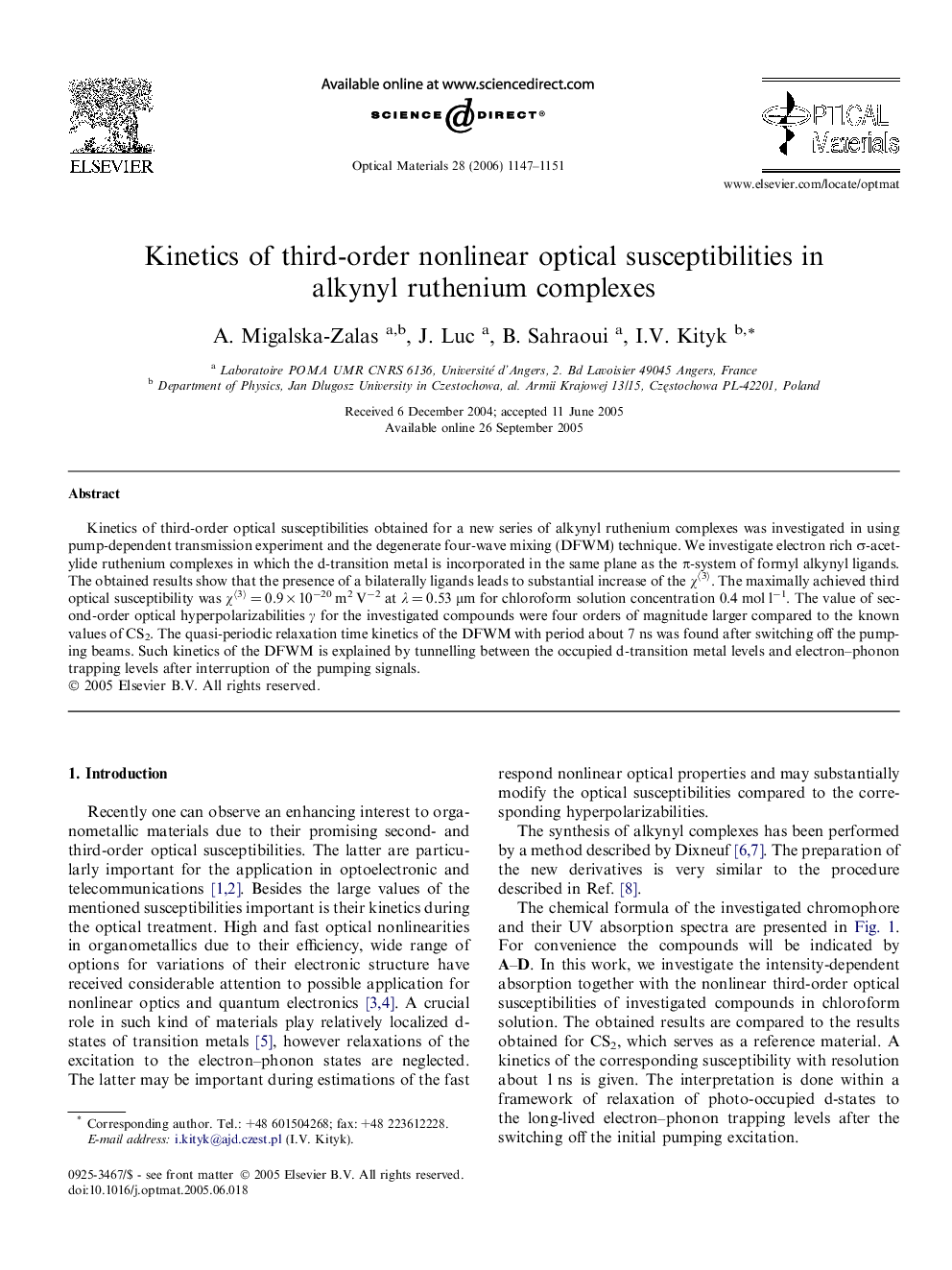| Article ID | Journal | Published Year | Pages | File Type |
|---|---|---|---|---|
| 1497474 | Optical Materials | 2006 | 5 Pages |
Abstract
Kinetics of third-order optical susceptibilities obtained for a new series of alkynyl ruthenium complexes was investigated in using pump-dependent transmission experiment and the degenerate four-wave mixing (DFWM) technique. We investigate electron rich Ï-acetylide ruthenium complexes in which the d-transition metal is incorporated in the same plane as the Ï-system of formyl alkynyl ligands. The obtained results show that the presence of a bilaterally ligands leads to substantial increase of the Ïã3ã. The maximally achieved third optical susceptibility was Ïã3ã = 0.9 Ã 10â20 m2 Vâ2 at λ = 0.53 μm for chloroform solution concentration 0.4 mol lâ1. The value of second-order optical hyperpolarizabilities γ for the investigated compounds were four orders of magnitude larger compared to the known values of CS2. The quasi-periodic relaxation time kinetics of the DFWM with period about 7 ns was found after switching off the pumping beams. Such kinetics of the DFWM is explained by tunnelling between the occupied d-transition metal levels and electron-phonon trapping levels after interruption of the pumping signals.
Related Topics
Physical Sciences and Engineering
Materials Science
Ceramics and Composites
Authors
A. Migalska-Zalas, J. Luc, B. Sahraoui, I.V. Kityk,
